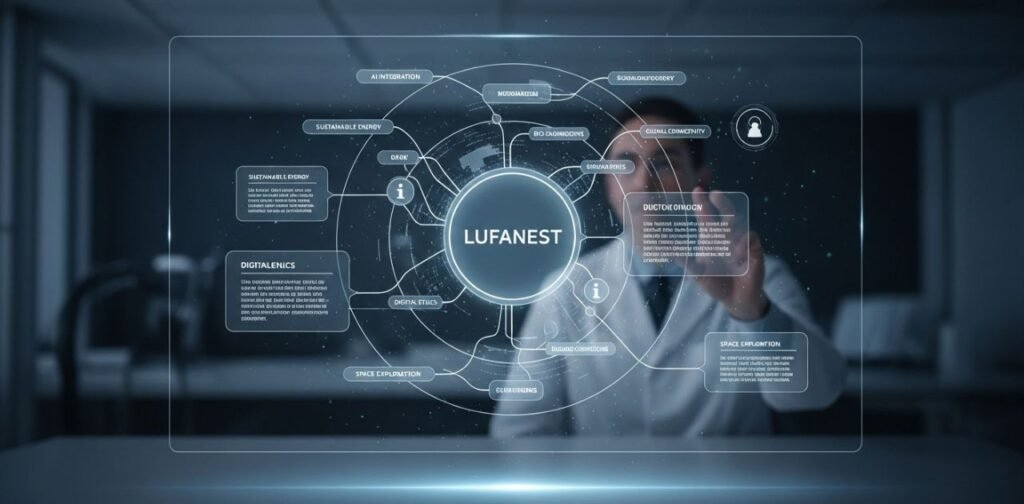Introduction
In today’s fast-evolving digital and lifestyle ecosystem, new terms and concepts keep surfacing that often leave people curious. One such emerging term is Lufanest. While it may sound unfamiliar at first, Lufanest is quickly becoming relevant in discussions around technology, sustainability, lifestyle, and even creative innovation. Whether you’ve stumbled upon it while researching modern solutions, browsing eco-friendly innovations, or exploring digital platforms, understanding what Lufanest is and how it relates to our daily lives is crucial.
This article provides a deep dive into Lufanest—its meaning, importance, applications, and potential future growth. We will explore how it connects to broader trends, the industries adopting it, and why it has caught the attention of experts and innovators alike.
What is Lufanest?
Lufanest can be best described as a multifaceted concept bridging innovation, lifestyle, and sustainability. At its core, Lufanest represents a forward-thinking approach that blends comfort, adaptability, and future readiness—whether in terms of design, technology, or eco-conscious living.
The term has been adopted across different contexts, often used to signify:
- Innovation in lifestyle products – Furniture, home design, and products focused on ergonomic comfort and modern aesthetics.
- Digital ecosystems – Platforms or services that create a “nest” of features designed for seamless experiences.
- Sustainability-driven solutions – Initiatives or products that prioritize eco-friendliness while maintaining efficiency.
Think of Lufanest as a “nest” where modern trends, user comfort, and innovation converge. It’s not restricted to one industry; instead, it stretches across technology, design, business models, and eco-friendly solutions.
For example, a tech company might use the term to brand its all-in-one productivity suite, while an interior design firm could adopt it for its collection of modular, sustainable furniture. Regardless of application, the essence of Lufanest lies in creating spaces and solutions that foster well-being, adaptability, and growth.
Why is Lufanest Important in Today’s World?
In an era where digitalization, sustainability, and human-centric design dominate conversations, Lufanest stands out as a relevant and meaningful concept. Its importance lies in the way it addresses modern-day challenges while aligning with long-term global goals.
- Sustainability and Green Living
Climate change has heightened the need for sustainable solutions. Lufanest-inspired designs often prioritize recyclable materials, renewable energy integration, and eco-conscious manufacturing. This makes it an attractive choice for industries focused on reducing their carbon footprint. - Human-Centered Innovation
Whether in digital platforms or physical products, Lufanest emphasizes user comfort and adaptability. It promotes ergonomics, usability, and inclusivity, ensuring that solutions are designed for everyone, not just a select few. - Digital Transformation
In tech, Lufanest embodies the nest-like ecosystem model, where multiple features are brought together in one seamless experience. This is particularly relevant for startups and businesses developing integrated platforms—whether for productivity, e-commerce, or community building. - Future-Proof Solutions
Lufanest is forward-looking. It focuses not just on immediate needs but also on adaptability for future demands, making it especially appealing for industries like architecture, software, and education.
Simply put, Lufanest matters because it resonates with today’s most pressing priorities—sustainability, innovation, and user well-being—while paving the way for future advancements.
Applications of Lufanest Across Industries
Lufanest is not limited to one particular area; instead, it has wide-ranging applications across various industries. Let’s explore how different sectors are incorporating this concept.
1. Technology and Digital Platforms
In the tech world, Lufanest often refers to all-in-one ecosystems—platforms that integrate multiple services under one roof. Examples include productivity suites, collaboration tools, or digital learning platforms that nest different features together.
- Businesses use Lufanest-inspired systems to streamline workflows.
- Startups adopt it to create user-centric platforms that combine convenience with adaptability.
- Cloud-based ecosystems branded with the Lufanest approach often emphasize flexibility, data security, and personalized experiences.
2. Home and Interior Design
Lufanest in design represents modern comfort with sustainability. Furniture collections or home setups inspired by this concept often focus on modularity, eco-friendly materials, and ergonomic comfort.
Imagine a living space where every piece of furniture is adaptable, stylish, and designed to reduce environmental impact—that’s Lufanest in action.
3. Education and Learning
The education sector also benefits from Lufanest-inspired models. Digital learning platforms that provide integrated resources—videos, live classes, assessments, and community spaces—fall under this umbrella. The goal is to create a nurturing learning “nest” that supports learners at all levels.
4. Healthcare and Wellness
Wellness brands have started to explore Lufanest as a framework for holistic well-being solutions. From ergonomic office chairs to apps that integrate physical and mental health resources, the focus remains on user comfort, long-term health, and balanced living.
5. Business and Entrepreneurship
Startups and entrepreneurs are leveraging the Lufanest concept to create brand identities that reflect adaptability and sustainability. For example, a company could market itself as a Lufanest-driven venture, signaling to customers that it values eco-friendliness, comfort, and modern innovation.
Across these industries, Lufanest is proving to be more than just a buzzword—it’s becoming a guiding principle for next-gen solutions.
Future of Lufanest: Trends and Predictions
Looking ahead, the relevance of Lufanest is only expected to grow. As industries evolve, the concept will likely expand into even more areas of daily life and professional practice.
- Smart Homes and IoT
With the rise of Internet of Things (IoT) devices, Lufanest-inspired ecosystems could become standard in households. Integrated, user-friendly systems managing lighting, energy, and security will create truly “nested” smart environments. - Sustainable Architecture
Urban planners and architects may adopt the Lufanest framework for building future cities that emphasize green design, adaptive spaces, and community well-being. - Workplace Evolution
Remote work and hybrid models are here to stay. Lufanest-driven office solutions will focus on ergonomics, collaboration tools, and adaptable environments that support both productivity and mental health. - AI and Digital Integration
Artificial Intelligence will further enhance Lufanest systems by making them more personalized, predictive, and efficient. Imagine a digital “nest” that anticipates your needs, from learning preferences to productivity habits. - Cultural Adoption
As awareness grows, Lufanest could evolve into a cultural term symbolizing comfort, adaptability, and forward-thinking design—similar to how concepts like “hygge” or “minimalism” entered mainstream conversations.
The future of Lufanest is bright because it aligns with global megatrends: sustainability, digitalization, personalization, and human-centered innovation.
FAQs About Lufanest
1. What does Lufanest mean?
Lufanest is a modern concept that blends innovation, comfort, sustainability, and adaptability. It can describe products, digital platforms, or design philosophies that focus on creating “nested” solutions for users.
2. Is Lufanest a brand or a concept?
It can be both. Some companies may adopt Lufanest as a brand name, while others use it as a concept to describe their eco-friendly, user-centered, or digitally integrated solutions.
3. How is Lufanest different from traditional innovation?
Traditional innovation often focuses on solving a problem or improving efficiency. Lufanest goes further by emphasizing sustainability, adaptability, and holistic well-being.
4. What industries are using Lufanest?
Industries such as technology, interior design, education, wellness, and business entrepreneurship have begun incorporating Lufanest principles into their offerings.
5. Can Lufanest be applied to personal lifestyle?
Yes. Individuals can adopt a Lufanest-inspired lifestyle by choosing eco-friendly products, creating comfortable spaces, and embracing digital tools that simplify daily routines.
6. Is Lufanest connected to sustainability?
Absolutely. One of the core principles of Lufanest is eco-consciousness, whether in the form of recyclable materials, renewable energy, or sustainable design practices.
7. What is the future of Lufanest?
The future looks promising, with potential applications in smart homes, AI-driven platforms, sustainable architecture, and personalized wellness ecosystems.
Conclusion
Lufanest is more than just a catchy term—it’s a paradigm shift toward innovation that prioritizes people, sustainability, and adaptability. Whether applied in technology, design, wellness, or education, it represents the fusion of comfort and progress.
As industries and individuals seek solutions that are future-proof, eco-friendly, and user-centric, Lufanest is poised to become a guiding philosophy. The coming years will likely see it integrated into smart homes, adaptive workplaces, and AI-powered ecosystems that redefine convenience and well-being.
For businesses, embracing Lufanest means aligning with global priorities like sustainability and digital transformation. For individuals, it means creating a lifestyle that balances comfort with responsibility.
The journey of Lufanest has just begun, but its potential to shape industries, cultures, and everyday lives makes it one of the most exciting concepts of our time.



